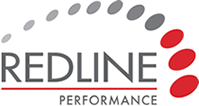“Hiya, how are you today? How was your weekend?” I was the next name up on this guy’s prospect list, or maybe I accepted a LinkedIn request, or downloaded an article, and here he was, exuding fake bonhomie and cheesy over-familiarity. Full marks for enthusiasm, zero marks for subtlety. The next part of his technique involved hammering me with classic ‘trick’ questions, designed to make me admit I had a business need for which he had the perfect solution. The guy sounded like he was in a rush, slightly desperate, impatient with me for not working out for myself why I should be interested in buying – or at least agreeing to a meeting.
This is 2017, and I’m afraid that most business people with any experience at all can see through this sort of thing a mile off, and it is so transparent, it’s counter-productive. It’s likely to get my hackles up straight away. I want rid of this conversation immediately, mainly because the whole approach is a signal that this person is a seller, primarily interested in themselves, not me or my business.
The obvious sales tactic of ‘building rapport’ at the start of a new conversation will mostly be seen for exactly what it is: I don’t know about you, but when some unknown person I’ve never spoken to before attempts to be my mate, without having earnt that right, it annoys me slightly. But because, like most of us, I’m always willing to give someone a chance, I won’t hang up. My responses are likely to be monosyllabic at this point, though. All I can think of are objections to continuing the conversation.
The problem here is that the seller (because that’s how they’re perceived and therefore treated by the prospect) is trying to involve me in a process which I’m simply not bought into at this stage. Questions that start with “Would you agree that….” “If you were able to….” are ‘trap’ questions, and they’re so 20th Century.
So I chucked a question back in his direction, to get some form of control of the conversation back. “Tell me what you’re selling and why I’d want it”. In other words, stop wasting my time and get to the point. This invited a features/benefits pitch. OK, we’re at least now getting somewhere. But the product pitch was accompanied by closing questions, and an offer of an on-line demo, right now. Again, I felt ‘pushed’ to conform to this guy’s template, agenda or sales process. At no point did he demonstrate any empathy, curiosity or understanding of what I might actually need or want.
So how to get it right? First of all, relax. Calm down! Sound like a credible, confident business person, not a seller. Introduce yourself professionally and succinctly, then immediately explain why you’re calling: you’re calling because you suspect you might be able to help their business, but you’re not sure at this stage. You’d like to explore it with them. For example, you’ve had success helping a similar business solve a particular issue or challenge; you’ve helped that business in this measurable way, and now you’d like to see if that might work for them too.
Now – ask a couple of key questions, to get an informal, meaningful discussion going – so make the questions intelligent, insightful, and related to their market or challenges. Demonstrate throughout that you have some genuine understanding of them and their business. There is no excuse for not being able to do this – everything you need is a click away on the web.
Successful, consultative selling that works in the 21st Century is all about developing a ‘pull’ dynamic, not a ‘push’ dynamic. Draw your prospect into a meaningful, credible business discussion about them, not about you and your product. If you get this right, the prospect will be asking you how to proceed, not feeling bullied into a corner. It’s easier said than done, requires a lot of practice and, dare I say, a bit of professional skills training too.
Which is how my conversation with our seller ended up: a referral to their sales director to help them get it right.

